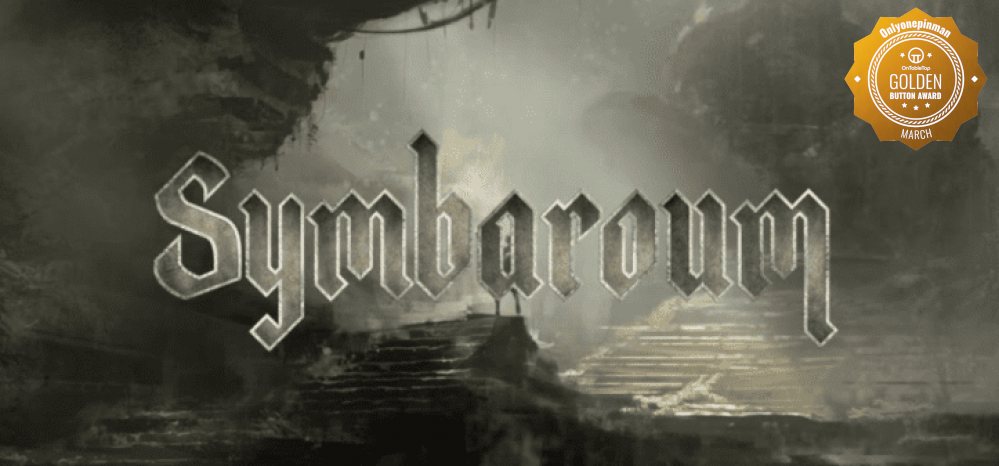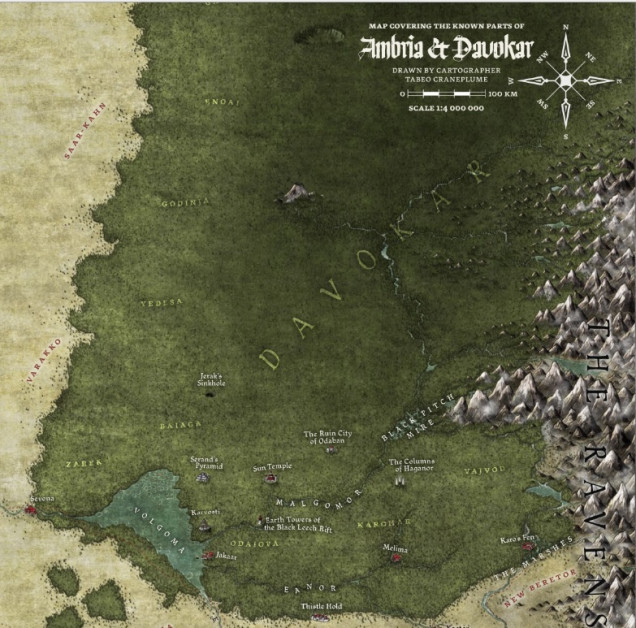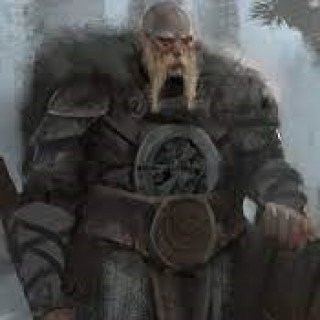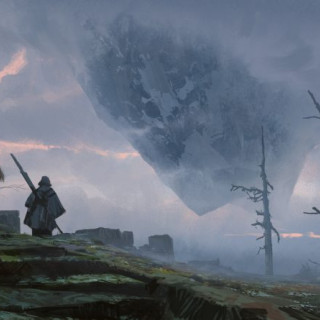
The Saga of Symbaroum
Background - Barbarians
The Barbarians are a collection of clans who inhabited the lands north of the Titans prior to the arrival of the Ambrians. For the 200 years since the destruction of the city of Lindaros, which acted as a centre of government and civilisation in the region, the clans warred with one another. Historically there were 13 clans however the first act of the Ambrians, essentially announcing their arrival, was to reduce that to 12 with the subjugation of the Kazid clans and their integration into Ambrian society. That 12 has since been reduced to 11 following a brief war with the Jezora clans which saw them destroyed. There are rumours of a 12th clan – a beast clan – but there are no confirmed accounts of their existence by the Ambrians.
Each of the Barbarian clans is culturally and visually distinct and they all have very different views and attitudes to each other and towards Ambrians. Generally speaking the southern clans who have had the most exposure to the Ambrians have more relaxed and friendly attitudes towards them. They will often trade with and help the Ambrians on occasion. The more northern clans on the other hand tend to be much more hostile towards the invading southerners. This is an arrangement that suits the Ambrians well as it prevents the Barbarians from uniting against them, especially as their arrival has caused the clans to live more harmoniously than in the past.
Geographically, there are also two main areas that the barbarians inhabit – the Forest of Davokar and the plains to the west.
Although it’s hard to see on the map, you can see the names of some of the clans on the map – yellow in the forest and red on the plains. The clans exist in a sort of two axis arrangement around the compass, being either planes peaple (west) or a forest people (east) and also being either northern or southern.
Western Clans
There are only two tribes on the planes to the west, the Saar-Khan in the north and the Varakko in the south. As mentioned already clans, the Saar Khan in the north are much more insular than their southern Varakko neighbours and are considered savage even by the standards of the North. They are exceedingly hostile to Ambrians as they proclaim themselves to be the heirs to Symbaroum. Their main settlement is a fortress in the far north where they worship some form of Beast god. A few times a year they send warriors to raid other Barbarian settlements although these raids are denied by the clan chief as rogue elements within the clan. The Varakko are more nomadic and travel the plains in large convoys, trading with the Ambrian settlements who border their lands to the south. They are also subjected far more than the other clans to the raids of the Saar Khan. They have a strong relationship with the Ambrians and the Duke of New Berengoria allows them to freely travel the lands on the Ambrian side of the border to avoid the raids of the Saar Khan.
Northern Forest Clans
There are 4 tribes occupying the northern parts of Davokar, the Gaoia, the Enoai, the Godinja, and the Yedesa. As with the planes tribes the most northern of these, the Gaoia are considered to be the most brutal and promitive of the clans. They are rumoured to be aligned with a great Lyndworm and as a people they rarely venture outside their lands and so are not often seen in the south. Apart from the Wrathguard warriors whom they send to guard the city of Karvosti in the South. The Enoai are a tree dwelling people who prefer to keep to the depths of the forest, making their homes among the roots or high in the branches of ancient, giant trees. The Goeds of the Godinja are artisans and craft many of the masks that the Barbarian clans are often seen wearing. They also claim to be descended from the ancient rulers of Symbaroum (although they don’t claim to be its rulers). However the other clans are quick to point out that up until a few generations ago the Goeds were very closely related to the Elves of Davokar and their chieftain, Vikomar, has Elf blood running through his veins. The Yedesa are probably the most civilised of all of the Barbarian tribes, having given up any pretence of being nomadic favouring permanent settlements. This has given rise to a certain amount of dominance by the clan, 6 of the last 10 high chieftains have been from the Yedesa and their chieftain Leonod’s stone fortress is among the most impressive Barbarian structures.
Southern Clans
Finally there are the southern clans, occupying the southern regions of Davokar and mostly sharing a border with the Ambrians. Starting in the East, clan Zarek is probably the most hospitable to the Ambrians. In part , this is likely due to the trade they have with the Ambrians. However it is no secret that the Zareks assisted the Ambrians in defeating clan Jezora and their chief Haldobar with whom Monovar, chief of the Zarek had a blood feud. The Baiaga are a clan that is somewhere between a northern and a southern clan, but their somewhat peaceful attitude towards Ambria put them, for me at least, in the southern list. They are renowned for fighting alongside their tame Bear beasts called Baiagorns. Generally the wander the forests hunting or fish in the great lake but for reasons unknown, many Baiags choose to leave their home land for periods of time and they are often seen in Thistlehold as well as the Barbarian capital Karvosti. The Odavs of clan Odaiova inhabit the land between Karvosti and Thistlehold meaning that all of the major trade routes between the Barbarian capital city and the treasure rich Ambrian settlement pass through their lands. Not only do the Odavs tolerate the Ambrians but they actively capitalise on it, openly trading with them and acting as intermediaries between Ambrians and Barbarians. The Karits of clan Karohar, unlike the other southern clans, are warlike and openly hostile towards the Ambrians. There may be several reasons for this, the recent destruction of neighbouring clans (first Kazid and the Jezora) or the fact that Ambrian treasure hunters constantly invade their lands, disturbing the ancient ruins and attracting the attention of the elves (who consider themselves guardians of the ancient places – we will visit the Elves in a future article). Finally there’s the Vajvod, in the south eastern reaches of Davokar on the edge of the Raven mountains. The Vajvod are very relaxed about the Ambrian presence, so much so that there are several Ambrian footholds in the region, including a base for the Queen’s rangers
In terms of artwork, there’s not actually any defined images for each of the clans. There are pictures and images throughout the book of barbarians but none linked specifally to a clan. So splitting them into the three subgroups will really help to start to come up with designs for them that I can then try and find miniature ranges to suit. Broadly speaking I think that the northern tribes need to look more stereotypically barbarian, whether that be like the furclad wildlings off Game of Thrones or the woad covered and tattooed ancient celts or a mixture, seeing as there are multiple tribes. I then think the more southern and some (Ambrians) might say more civilised, give them a more “modern” look, maybe looking at various Dark Age societies like Saxons and Danes, so less woad and tattoos and more chainmail or other similar armours. It’s also interesting that many of the barbarian tribes use animals in their armies, more so than the Ambrians and their horses. That could also be an interesting aspect













































































Leave a Reply